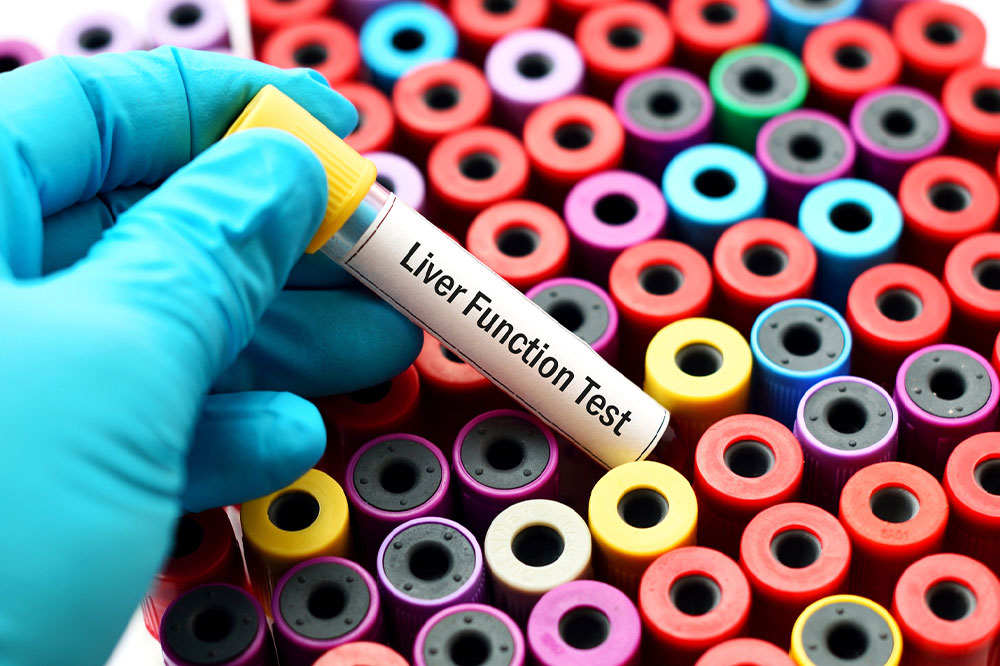
Liver function tests – Purpose, types, and procedure
Most people know that the liver is a vital organ in the body, but many are unclear in understanding its functions. The liver is responsible for several crucial bodily functions, including producing bile to help digest food and filtering toxins from the blood. Because the liver is integral, it is necessary to ensure its proper functioning. Getting regular liver function tests (LFTs) is one way to attain this. Read further to learn more about LFTs.
Liver function tests
LFTs are blood tests used to determine the health of your liver. They are part of a routine checkup or when you experience symptoms that suggest your liver is not functioning correctly. One should immediately consult a doctor for a complete evaluation of any such symptoms.
Symptoms that mandate LFTs
Various symptoms can indicate liver problems, such as fatigue, jaundice, dark-colored urine, nausea, vomiting, or abdominal pain. LFTs can help detect liver damage and disease. If you experience any of these symptoms, you should get liver function tests to check if you have an underlying liver issue.
Purpose
Liver function tests are done to check the primary levels of certain enzymes and proteins in the blood. Some of the most commonly suggested liver function tests are listed below.
Bilirubin
Bilirubin is a yellow pigment that is produced when red blood cells break down. High bilirubin levels in the blood might be a sign of liver damage. It accumulates in the blood due to liver disease and can be measured to determine the severity of liver function. Bilirubin levels are also used to diagnose hepatitis B and C infections.
Prothrombin time (PT)
PT measures the pace it takes for your blood to clot. A high PT may be an indication of severe liver damage or disease. It measures how long it takes for clotting factors – such as prothrombin, to form a clump after being activated by thrombin. Elevated PT values may indicate an increased risk for bleeding complications, mainly if other coagulation factors are also abnormal.
Alkaline phosphatase (ALP)
Alkaline phosphatase (ALP) breaks down proteins in the body, including those that contribute to inflammation. Elevated ALP levels may indicate damage to tissues throughout the body or chronic liver disease.
Aspartate transaminase (AST)
Aspartate transaminase (AST) catalyzes the conversion of amino acids into urea and ammonia. AST activity is often elevated in conditions like hepatitis C infection and cirrhosis, which lead to the accumulation of nitrogenous waste products in the bloodstream.
Alanine transaminase (ALT)
This test measures the amount of alanine in the blood. Elevated levels may indicate a problem with the liver’s ability to break down proteins.
Gamma-glutamyltransferase (GGT)
GGT is an enzyme that helps convert glutamic acid into gamma-glutamylcysteine, a glutamate molecule essential for brain function and nerve cell communication. Abnormalities in GGT activity can lead to problems with brain function and nerve cell communication.
Procedure
LFTs are generally safe and easy to tolerate. The doctor will draw blood from a vein in your arm, and you may feel minor discomfort during the procedure. The liver function test results will help your doctor determine if you have any underlying liver problems. If there are any concerns, the doctor may order additional tests or refer you to a specialist. In most cases, liver function tests are harmless and don’t require special preparations or nutritional restrictions. The results can help your doctor determine if you have any underlying liver conditions that mandate therapy and provide valuable information about your general health.




